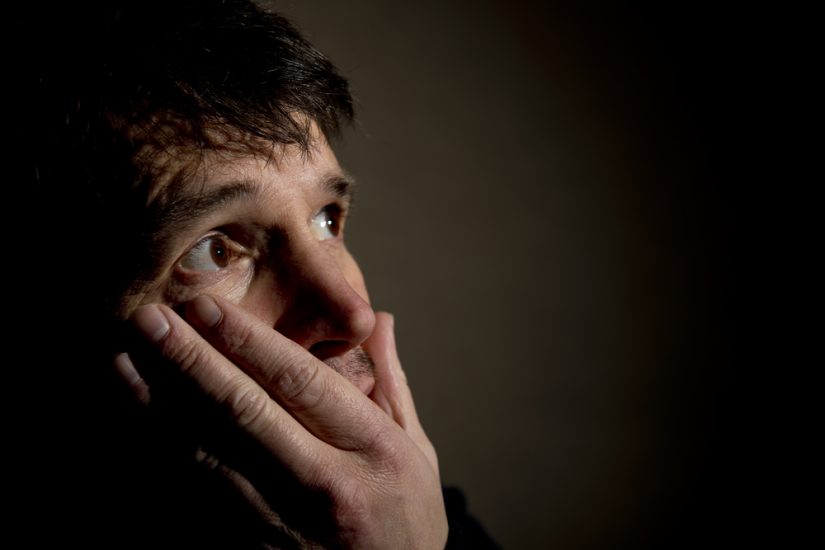- June 6, 2023
- by Shalini Murmu
- Borderline Personality Disorder
Let’s dive headfirst into a subject that hits close to home for many of us: self-punishing habits. We all have our quirky habits, but when they start to become self-destructive, it’s time to pay attention to them. Self-punishing habits may appear in many ways, such as excessive self-criticism, an urge for perfectionism, or even engaging in harmful behaviors. Exploring the underlying reasons behind these habits can help us gain a deeper understanding of our mental health.
Understanding The Layers Of Self Punishment
Let’s get real for a moment. We all have our fair share of self-punishing habits, whether we’re aware of them or not. Probably you are one of those who constantly beat themselves up over every tiny mistake, convinced that you’re a complete failure. One of the most common self-punishing habits is engaging in excessive self-criticism and negative self-talk.
Or perhaps you’re the perfectionist who can’t sleep until every last detail is flawless, even if it means sacrificing your sanity. People who constantly berate themselves and draw all their attention to their little mistakes may be struggling with low self-esteem, unresolved trauma, or a distorted self-image. Such habits can create a perpetual cycle of negativity, eroding self-worth and hindering personal growth. Sound familiar? Well, my friend, you’re not alone.
Playing The Self-Sabotage Game
Okay, let’s talk about those moments when we shoot ourselves in the foot. Procrastination, overindulging in vices, or getting caught up in toxic relationships—these are all self-sabotaging behaviors that can be downright harmful. But why do we do it? It’s often rooted in deep-seated emotional pain or a subconscious desire to thwart our own happiness and success. It is as if we’re caught in a twisted dance of self-destruction, using these behaviors as a misguided coping mechanism.
Self-sabotage is often a reflection of intense emotional pain or a subconscious belief that we don’t deserve happiness or success. It’s like we’re punishing ourselves before anyone else gets the chance to do so.
Levels Of Self-Harm Practices
However, we may all at some point in life have questioned our existence and our worth when we are too overwhelmed with the stressors around us. But some signs or practices on a very regular basis can lead to extreme stages. Let’s have a closer look at the phases of self-destructive patterns.
- Mild or Superficial Self-Harm : At the milder end of the spectrum, the person may engage in self-harm that involves superficial or surface-level actions to hurt themselves. This could include behaviors such as scratching, pinching, or picking at the skin. While these actions may cause temporary pain or discomfort, they generally do not result in significant physical harm or lasting damage.
- Moderate Self-Harm : Moderate self-harming behaviors involve actions that can cause more noticeable physical harm. This may include cutting the skin with a sharp object, burning the skin, or hitting oneself. These behaviors can result in more significant injuries and necessitate medical attention.
- Severe Self-Harm : Behaviors involving extreme self-harming tendencies can cause significant physical harm and carry a higher risk of potentially fatal injuries. Examples include deep cutting, severe burning, or self-inflicted fractures. These behaviors require immediate medical intervention to address the physical injuries and ensure the safety of the person involved.
- Life-Threatening Self-Harm : At the most severe level, self-harming behaviors can become life-threatening. This includes actions such as deliberate overdosing on medication or substances, asphyxiation, or attempting suicide. These behaviors require immediate emergency medical intervention and mental health support.
How To Get Over Self-Destructive Habits?
Take a good, hard look at yourself–no judgment, just curiosity. Notice your habits, thoughts, and emotions. By cultivating self-awareness, you can identify those self-punishing patterns and gain insights into what triggers you. Talking to a trusted friend or seeking professional help can help you dig deeper and understand the underlying reasons behind your behaviors.
Challenge those negative beliefs and replace them with self-compassion and self-care. When you catch yourself spiraling into negativity, take a step back and remind yourself that you’re only human. Surround yourself with supportive people who lift you up and help you see your worth.
If self-punishing habits persist or significantly impact your life, don’t hesitate to seek professional help. There are therapists, counselors, or support groups can provide guidance, perspective, and strategies to help you break free from this destructive cycle.
Self-punishing habits often serve as indicators of more serious psychological issues and unmet emotional needs. Understanding these habits can shed light on our mental health and pave the way for personal growth and healing.
NABHS, Helping You Take One Step At A Time
In this daunting journey, a little guidance goes a long way. At NABHS, we offer personalized guidance to help you navigate the treacherous waters of self-destructive tendencies or any mental health issues. Our team of compassionate experts is ready to lend a helping hand, offering advice, answering questions, and providing support as you embark on your quest for healing.













